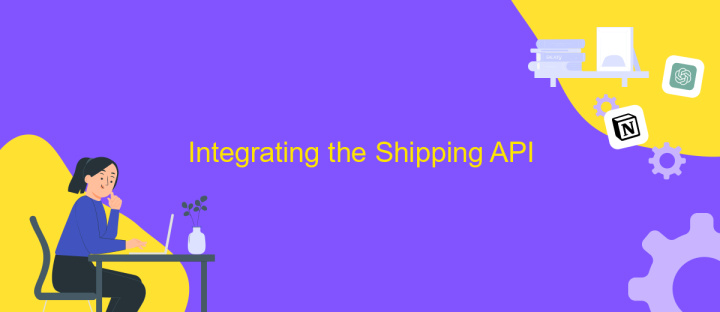Shipping API Integration
In today's fast-paced e-commerce landscape, efficient shipping solutions are crucial for maintaining customer satisfaction and staying competitive. Shipping API integration offers businesses a seamless way to automate and streamline their shipping processes. By connecting with various carriers and platforms, it enables real-time tracking, accurate shipping rates, and simplified logistics management. This article explores the benefits and key considerations of implementing a Shipping API in your business operations.
Understanding the Shipping API
Shipping APIs play a crucial role in modern e-commerce by streamlining the logistics process. These APIs allow businesses to integrate shipping functionalities directly into their platforms, enabling seamless management of shipping operations. By leveraging a shipping API, companies can automate tasks such as rate calculations, label printing, and tracking updates, significantly reducing manual effort and errors.
- Rate Calculation: Instantly retrieve shipping rates from various carriers based on package dimensions and destination.
- Label Generation: Automatically generate and print shipping labels, ensuring accurate and efficient dispatch.
- Tracking Updates: Provide real-time tracking information to customers, enhancing transparency and satisfaction.
- Carrier Integration: Connect with multiple shipping carriers through a single API, broadening delivery options.
Understanding how to effectively implement a shipping API can greatly enhance operational efficiency and customer experience. By integrating these APIs, businesses can offer more reliable and faster shipping solutions, which is essential in today’s competitive market. Moreover, shipping APIs provide valuable data insights that can be used to optimize delivery strategies and improve overall service quality.
Choosing the Right Shipping API

When selecting a shipping API, it's crucial to evaluate the specific needs of your business. Consider factors such as the volume of shipments, the regions you serve, and any special requirements like tracking or insurance. A robust API should offer comprehensive documentation, ensuring ease of integration and reliable support. Additionally, check for compatibility with your existing systems to streamline operations and minimize disruptions. Flexibility in terms of customization can also be a significant advantage, allowing you to tailor the API to suit your unique business processes.
Another important aspect is the scalability of the API. As your business grows, your shipping needs will likely evolve, so choose an API that can scale with you. Services like ApiX-Drive can facilitate seamless integration, providing tools to connect various platforms without extensive coding knowledge. This can be particularly beneficial for businesses looking to automate and optimize their shipping processes efficiently. By carefully assessing these elements, you can select a shipping API that not only meets your current requirements but also supports future growth.
Integrating the Shipping API

Integrating a Shipping API into your e-commerce platform can significantly enhance your logistics operations by automating shipping processes and providing real-time tracking updates. To begin, ensure you have access to the API documentation provided by the shipping service, which will guide you through the authentication process and help you understand the available endpoints and request methods.
- Register for an API key with the chosen shipping provider to gain access to their services.
- Read the API documentation thoroughly to understand the data formats and request structures required.
- Set up authentication by implementing the necessary security protocols, such as OAuth or API keys.
- Develop functions to handle API requests and responses, ensuring error handling is in place.
- Test the integration in a sandbox environment to verify that all functionalities work as expected.
Once the integration is complete, monitor its performance and make adjustments as needed to optimize efficiency. Regularly check for updates from the API provider to incorporate new features or changes in the API structure. This proactive approach will help maintain seamless operations and improve customer satisfaction through reliable shipping services.
Testing and Debugging

Testing and debugging are critical components in the successful integration of a Shipping API. Thorough testing ensures that all functionalities are working as expected and that the integration is seamless. Begin by conducting unit tests to verify individual components of the API. This helps identify any discrepancies early in the development process.
Once unit testing is complete, proceed with integration testing. This stage involves testing the interaction between the API and your application. Pay close attention to data flow and error handling. Ensure that the API handles various scenarios, such as invalid data or network interruptions, gracefully.
- Log all API requests and responses for analysis.
- Use mock data to simulate different shipping scenarios.
- Implement automated tests to streamline the testing process.
- Regularly review error logs to identify recurring issues.
After testing, debugging becomes essential for resolving any identified issues. Utilize debugging tools to step through your code and pinpoint the exact source of errors. Collaboration with your development team is crucial during this phase, as it allows for a more comprehensive understanding of potential problems and their solutions.


Deployment and Maintenance
Deploying a Shipping API integration requires careful planning and execution to ensure seamless functionality. Begin by choosing a reliable platform or service, such as ApiX-Drive, which simplifies the integration process by offering user-friendly tools and documentation. Thoroughly test the integration in a staging environment to identify and resolve any issues before going live. Ensure that all necessary security protocols are in place to protect sensitive data during transmission. Once satisfied with the testing results, deploy the integration to the production environment, monitoring its performance closely during the initial phase.
Maintenance is crucial to keep the Shipping API integration running smoothly. Regularly update the API to accommodate any changes or improvements made by the shipping provider. Utilize monitoring tools to track performance metrics and receive alerts for any anomalies. ApiX-Drive can assist in automating these updates and monitoring tasks, reducing manual workload and minimizing downtime. Additionally, maintain clear documentation of the integration process and any modifications made over time, enabling quick troubleshooting and efficient onboarding of new team members. Consistent maintenance ensures a reliable and efficient shipping process, enhancing overall business operations.
FAQ
What is Shipping API Integration?
How can I integrate a Shipping API into my e-commerce platform?
What are the benefits of using Shipping API Integration?
Are there any tools available to simplify Shipping API Integration?
What challenges might I face during Shipping API Integration?
Apix-Drive is a universal tool that will quickly streamline any workflow, freeing you from routine and possible financial losses. Try ApiX-Drive in action and see how useful it is for you personally. In the meantime, when you are setting up connections between systems, think about where you are investing your free time, because now you will have much more of it.

